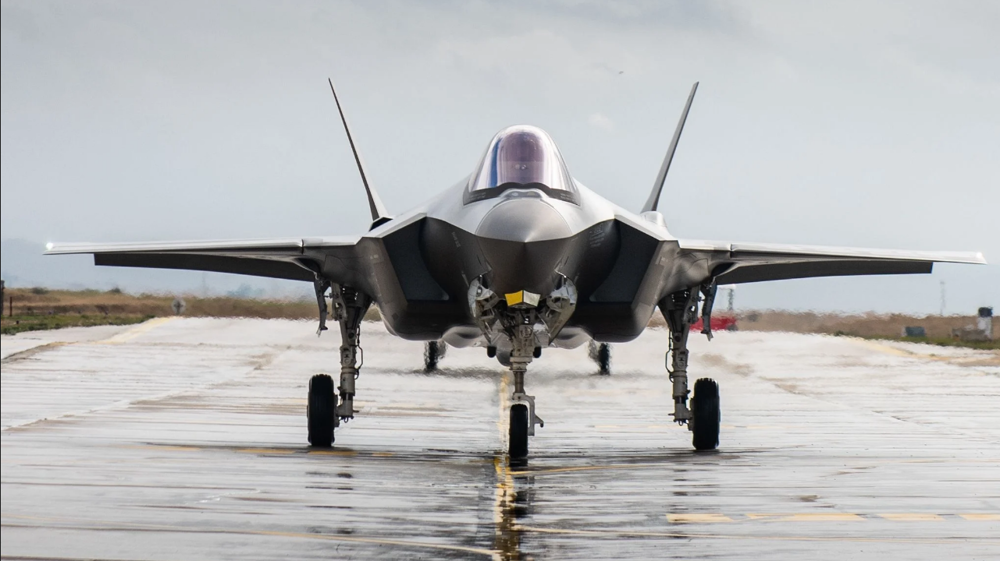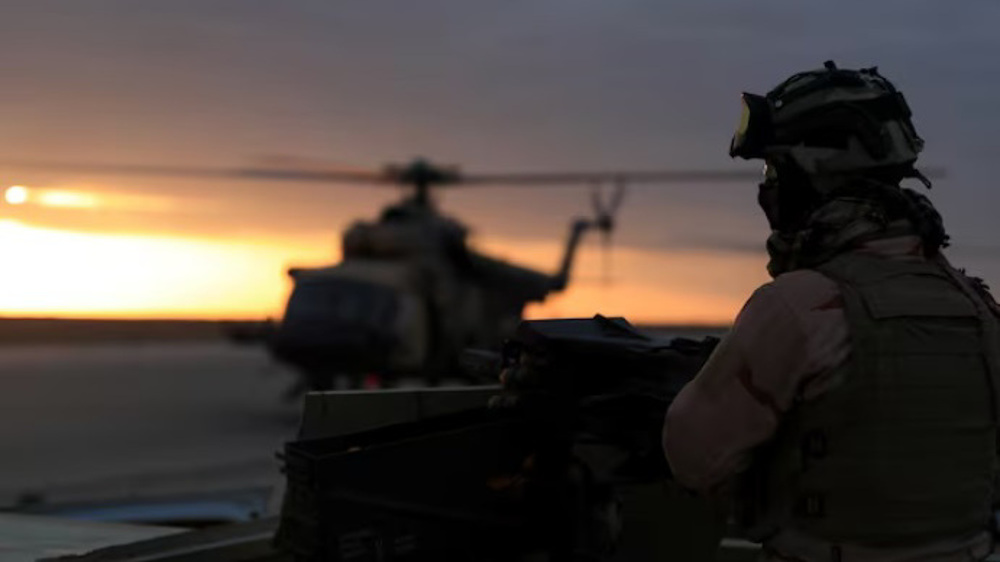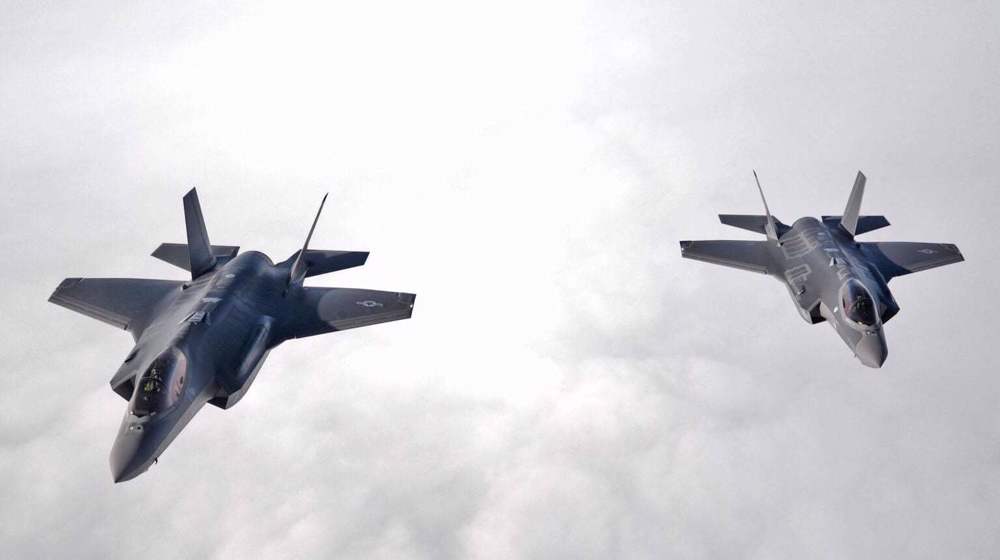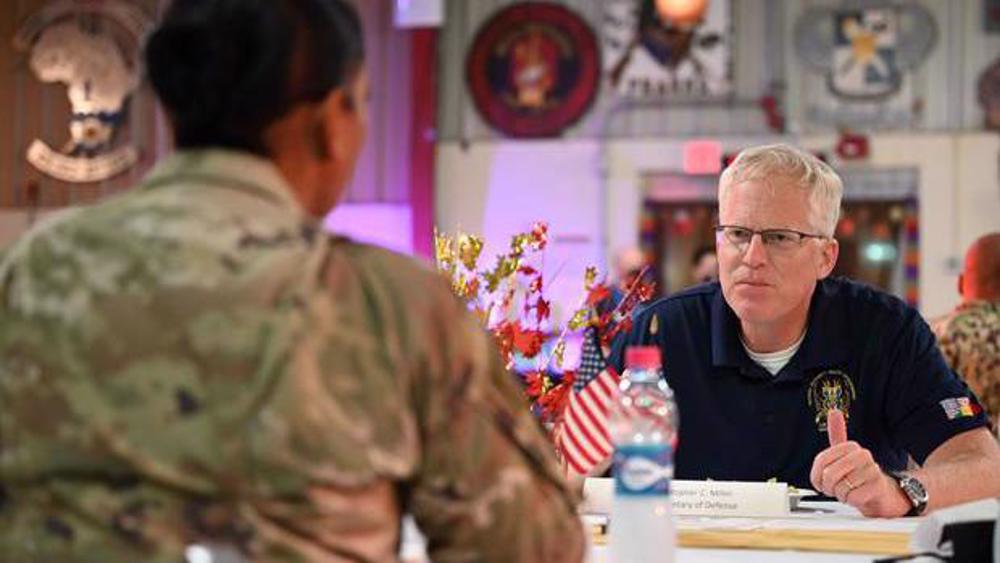US military recalls home aircraft carrier in hasty setback of its Iran scheme
The US defense chief has abruptly recalled home its Nimitz aircraft carrier from the West Asia amid opposition by top military advisers, marking a reversal of a major show-of-force strategy aimed at deterring Iran from taking retaliatory action for the US terror assassination of its top commander Lt. Gen. Qassem Soleimani along with several other senior Iranian and Iraqi military officers early last year in Baghdad.
Acting US Defense Secretary Christopher Millersuggested that the move was part of a “de-escalatory” signal to Iran in efforts to avert stumbling into a crisis in the final days of Donald Trump’s presidency, The New York Times reported Friday, citing military officials, further pointing to “American intelligence reports” claiming that Iran and its allies may be preparing to attack US targets “as early as this weekend” – marking the anniversary of the terror assassination -- to avenge Gen. Soleimani’s loss.
Miller’s order overruled a request from CENTCOM Commander Gen. Kenneth McKenzie -- leading American forces in the Middle East – “to extend the deployment of the Nimitz and keep its formidable wing of attack aircraft at the ready,” read the report, adding that it remains unclear whether even Trump was aware of Miller’s decision to recall the warship home.
It further underlined that as of Thursday, senior military adviser – including McKenzie and Chairman of the Joint Chiefs of Staff Gen. Mark Milley were “surprised” by Miller’s decision on the Nimitz.
The decision, initially confirmed by three military officials but not publicly announced, emerged one day after Air force B-52 bombers flew nonstop from the US to the Persian Gulf in a show of force that Pentagon authorities said was aimed at cautioning Iran against conducting retaliatory attacks on American forces or interests.
"This decision sends at best a mixed signal to Iran, and reduces our range of options at precisely the wrong time,” said former top Pentagon Middle East policy official, Matthew Spence. “It calls into serious question what the administration’s strategy is here.”
This is while the US Navy had sought to limit more extensions to the carrier’s already prolonged deployment, but commanders believed the warship would remain in the region for at least another several days to help counter what military intelligence analysts regarded as a growing and imminent threat against American regional assets.
Pentagon officials said they had deployed “additional land-based fighter and attack jets, as well as refueling planes” to Saudi Arabia and other US-backed Persian Gulf states “to offset the loss of the Nimitz’s firepower.”
Pointing to a major confusion in the US military with respect to potential Iranian moves, the report further underlined that senior Defense Department officials acknowledge they cannot tell if Iran or its allied forces in Iraq are preparing to strike American troops or are taking defensive measures in case the hawkish US president orders “a pre-emptive attack” against them in his waning days in office.
“What you have here is a classic security dilemma, where maneuvers on both sides can be misread and increase risks of miscalculation,” said Trump’s former special envoy to the US-led military coalition in Iraq and Syria, Brett McGurk.
However, some of Miller’s top aides, including Ezra Cohen-Watnick, one of the White House loyalists newly installed as the Pentagon’s top intelligence policy official, questioned the deterrence value of the Nimitz, “especially when balanced against the morale costs of extending its tour."
Some aides also raised doubts about “the imminence of any attack by Iran” or its regional allies as previously reported by CNN.
The development came as Pentagon and McKenzie’s Central Command (CENTCOM) had for weeks publicized several shows of force to warn Tehran of the consequences of any assault.
Additionally, the US Air Force three times dispatched B-52 bombers “to fly within 60 miles of the Iranian coast,” the report added, noting that the US Navy also announced “for the first time in nearly a decade that it had ordered a Tomahawk-missile-firing submarine into the Persian Gulf.”
The US has maintained a near-continuous aircraft carrier presence in the Persian Gulf region since the USS Abraham Lincoln aircraft carrier was deployed there in May 2019 amid fears that Iran was planning retaliatory attacks.
The Nimitz deployed from the US in April and was due to return before the end of the year. In early December, its planned return was postponed, in part out of persisting fear about potential Iranian retaliatory actions, and more recently it was ordered to provide support off the coast of Somalia for the movement of American forces out of the country.
‘No natural uprising’: Prominent global voices on US-Israeli role in engineering Iran riots
Trump threatens 200% wine tariffs on France to push Macron to join Gaza board
Yemen’s Saudi-backed PLC slams UAE for running secret prisons; Abu Dhabi denies
Swiss MPs move to strip UEFA of tax-exempt status over failure to ban Israeli teams
VIDEO | Massive Michigan pileup sees over 100 vehicles collide in highway crash
Diagnosing the roots of Iran’s economic turmoil
VIDEO | Press TV's news headlines
Son of Iran’s deposed Shah urges US, Israel to bomb country after failed ‘regime change’ plot

















 This makes it easy to access the Press TV website
This makes it easy to access the Press TV website